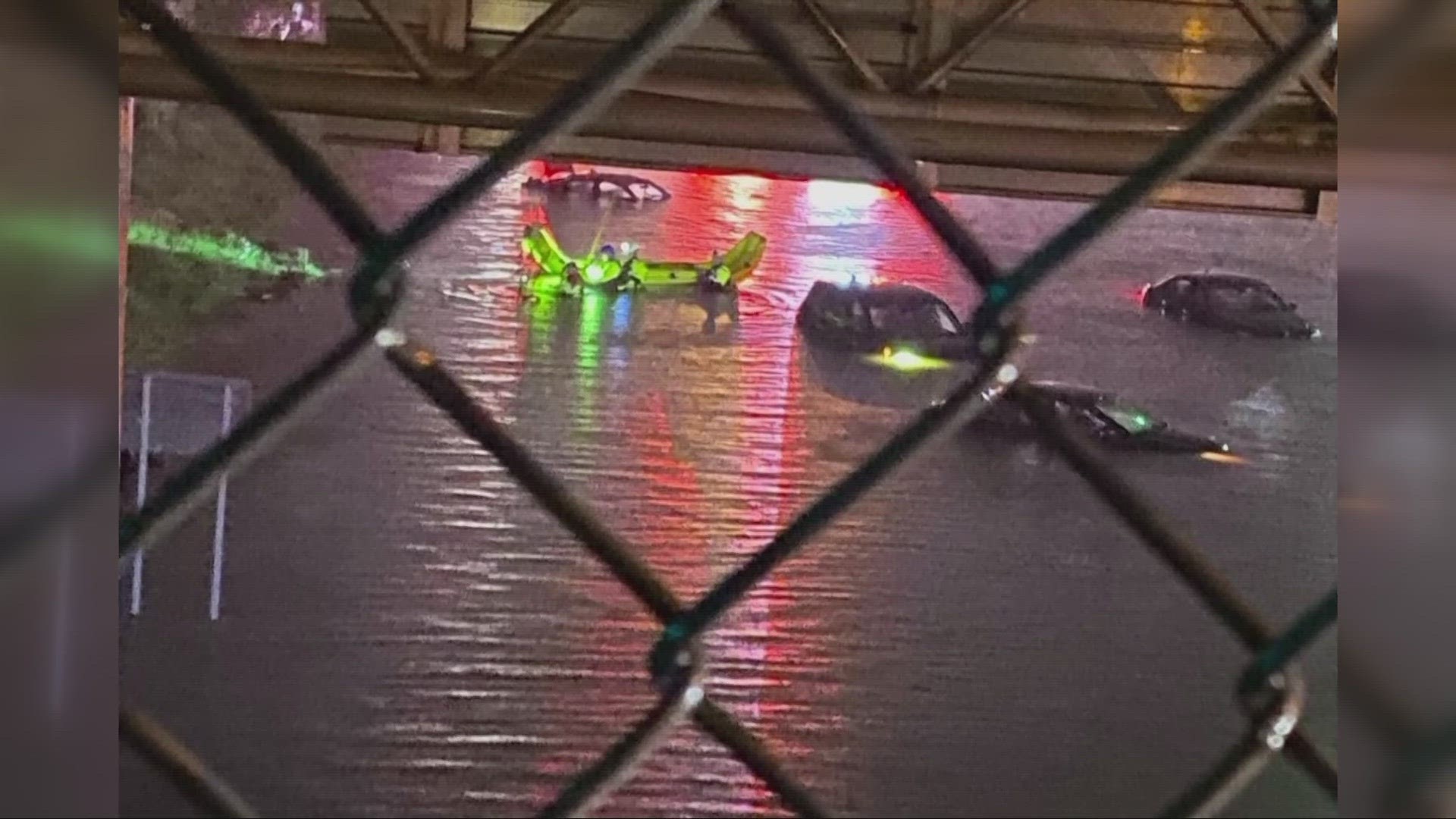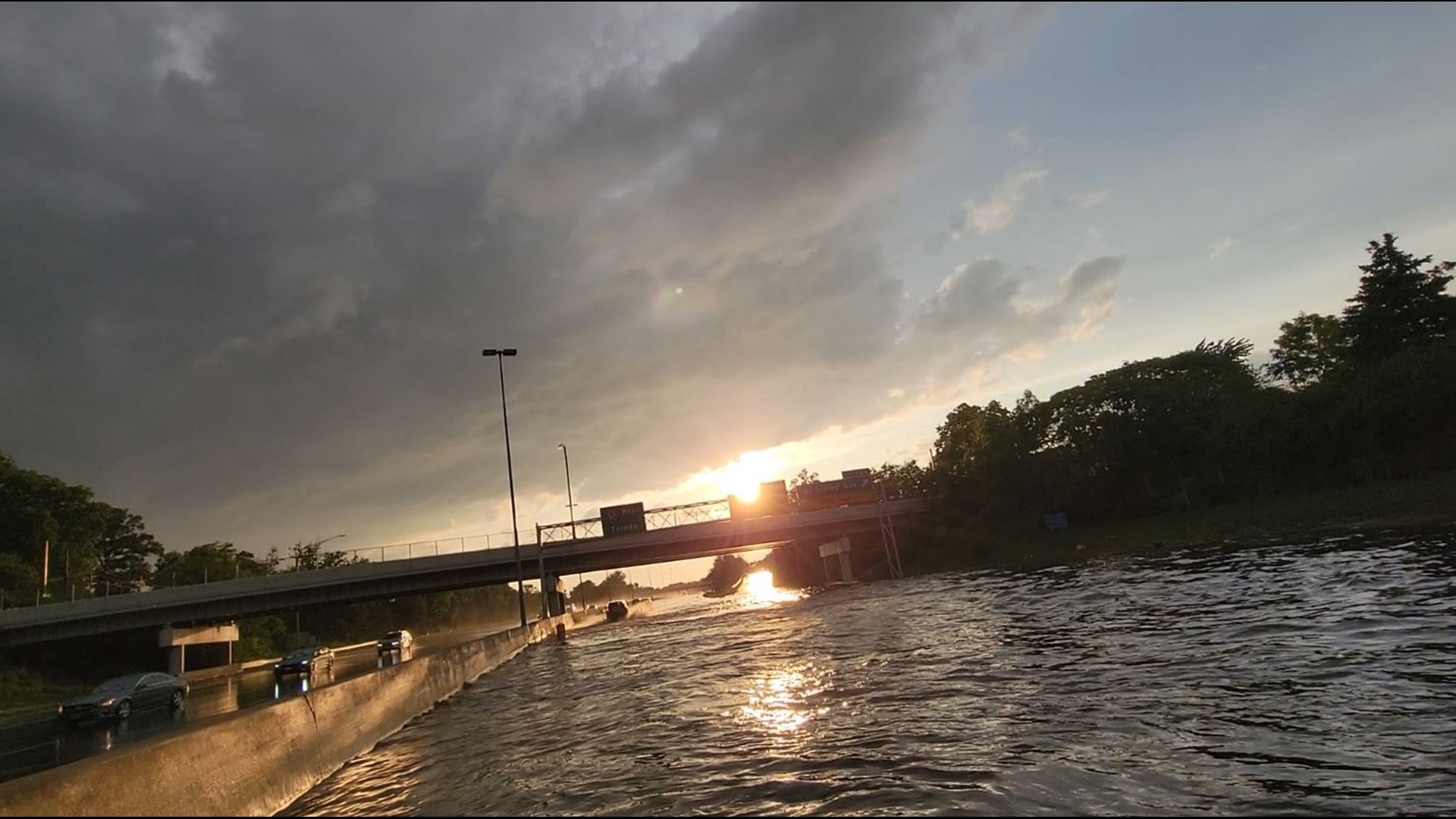LAKEWOOD, Ohio — As strong storms swept through Northeast Ohio on Wednesday evening, authorities say 10 people had to be rescued from a flooded portion of I-90 in Lakewood when their vehicles became stuck in the water.
"Head to 90 westbound by McKinley," a Lakewood dispatcher is heard saying. "Multiple calls of vehicles stalled out in the middle of the highway due to flooded roads."
Lakewood police say it was around 8:51 p.m. when Lakewood police and fire responded to the scene along I-90 West near the McKinley Avenue exit.
“Upon their arrival, the Lakewood Fire Department, the Westshore Swift Water Rescue Team and the Westlake Fire Department removed a total of 10 people from seven different vehicles that were stuck in the water,” according to a press release from Lakewood police. “The highway was shut down in both directions between Warren Road and McKinley Avenue until the water receded.”
Thankfully, no injuries were reported.
"What I found was so unique was the depth of the water on the car going almost up to the window and then seeing the Lakewood Fire Department professionally remove people, put them in small boats, and getting them to safety," said Gary Stone, an Administrative Captain for the Lakewood Police Department. "I'm happy and fortunate there were no car accidents and there was no one injured. It was a delay of people on Interstate 90, but at least we got everybody off, got the cars removed, got the water removed, and got the highway open again."
I-90 reopened around 1:30 a.m. Thursday.
The Ohio Department of Transportation is calling that part of the highway a problem spot, and is coming up with solutions to prevent, or at least minimize, the flooding there in the future.
Back on July 20th, severe weather also flooded the highway near McKinley Ave.
ODOT District 12 Public Information Officer Brent Kovacs said a hub cap blocked a drainage pipe and caused that particular backup. He says they'll be adding new mesh screens in the pipes to keep debris like this out.
But he said Wednesday's flooding was caused by the intensity of the rain.
"The amount of water we received in a short period of time, we received about an inch of rain in about 15 minutes, and no drainage system along any roadway is designed to handle that much water that quickly," he said. "It simply just backed up the drainage system."
ODOT also plans to update the drainage system, which was constructed back in the 1960's. The planned project will be modernizing the concrete and pipes starting in 2024.
“It will definitely help," Kovacs explained. "It brings the drainage system up to modern standards, and the modern standards are much more accommodating of these heavy rains that we get in 2023 compared to the 60's.”
Kovacs said the drainage system overhaul project is expected to take four years, but in the meantime, they will be more closely monitoring the drainage pipes to ensure there's no backups.
MORE FROM 3NEWS...
RELATED: FORECAST | Tracking more storms



